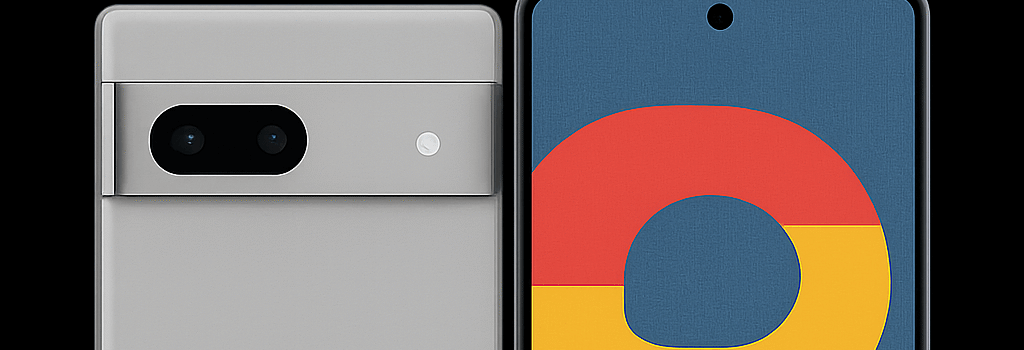Google Showcases Pixel 10 Design and Upgrades Ahead of Leak Cycle

With the Made by Google event slated for August 20, leaks around the Pixel 10 series have been rampant. In a strategic move to control the narrative, Google quietly updated its online store with a short video reveal highlighting the device’s design language and teasing core innovations. Here’s a closer look at what we know so far—and what we can infer from the engineering choices Google is making this year.
Design and Build: Evolution Over Revolution
The 13-second clip opens with a stylized “10” that morphs into the signature rear camera housing. The new Pixel 10 retains the minimalist silhouette introduced with the Pixel 9, featuring a unibody aluminum frame, matte glass back, and subtle antenna breaks. The muted blue-gray “Frost” finish shown in the teaser aligns with recent supply-chain leaks.
- Dimensions & Weight: Expected at 150×72×8.5 mm and around 185 g, roughly on par with the Pixel 9.
- Durability & Repair: IP68 ingress protection, recycled aluminum chassis, and modular component mounts—Google’s engineers appear to prioritize serviceability over sealed, glue-heavy assemblies.
- Accessory Compatibility: Early examination of side-button placement and speaker grills suggests many Pixel 9 cases will remain compatible, saving users from repurchasing protective gear.
Under the Hood: Tensor G5 and Performance Gains
Most notably, Pixel 10 introduces Google’s first TSMC-fabricated SoC, the Tensor G5, built on a 4 nm process node. This marks a departure from the 5 nm Samsung Exynos foundation of earlier Tensor chips.
“TSMC’s advanced packaging and custom NPU blocks deliver a 20% uplift in ML throughput over last year’s Tensor G4,” says Dr. Li Wei, a semiconductor analyst at TechInsights.
Chip Architecture Highlights
- CPU Configuration: 2× Arm Cortex-X4 @ 3.0 GHz, 4× Cortex-A720 @ 2.5 GHz, 2× Cortex-A520 efficiency cores.
- GPU & NPU: Mali G715-based GPU with 30% more shader cores; custom Tensor Processing Unit delivering up to 30 TOPS for on-device AI.
- ISP & Connectivity: Enhanced Image Signal Processor supporting 10-bit HDR capture at 4K 60 fps; integrated X70-series 5G modem with mmWave and Sub-6 GHz support.
Performance Benchmarks and Real-World Usage
- Geekbench 6 multicore scores in the 4500–4800 range, outpacing Snapdragon 8 Gen 3 by 5–8%.
- MLPerf benchmarks indicate a 25% reduction in latency for speech recognition tasks versus Tensor G4.
- Thermal management: Larger vapor chamber and graphene heat spreader keep sustained load performance within 10% of peak scores over extended gaming sessions.
Camera System: Triple-Lens Ensemble
Unlike the dual-camera configuration on the Pixel 9 base model, the Pixel 10 introduces a telephoto lens into its standard trim. Google appears to have chosen a 48 MP 3× optical zoom sensor alongside the 50 MP main Sony GN2 and a 12 MP ultra-wide module.
- Main Sensor: Sony GN2, 1/1.12″ with Dual Pixel Pro AF and OIS.
- Telephoto: 48 MP, 3× optical zoom, Pixel Neural Zoom enhancements.
- Ultra-Wide: 12 MP, 120° field of view, low-light optimized lens coatings.
Computational photography algorithms on the G5’s ISP will power features like Super Res Zoom 2.0, real-time HDR+ processing, and AI-driven Night Sight improvements.
Software & AI Features
Running Android 15 with Google’s custom skin, Pixel 10 will showcase on-device AI upgrades:
- Live Translate with sub-second transcription and IPA phonetic rendering.
- Assistant Generative for context-aware summaries in Gmail and Docs.
- Magic Eraser Pro with multi-object removal using the new NPU acceleration.
- Enhanced Recorder app supporting global phoneme recognition and speaker diarization.
Repairability and Sustainability
Following the Pixel Watch 4’s more modular design, Google has reportedly improved the Pixel 10’s interior layout for easier component replacement. The use of standardized 1.0 mm Torx screws, adhesive strips, and replaceable rear glass panels aims to boost its iFixit repairability score above 7/10.
Release Timeline and Pricing
Pre-orders are expected the moment the keynote ends on August 20 at 1 pm ET. Early rumors peg the base 128 GB model at $699, with a 256 GB variant at $799. Color options include Frost, Obsidian, Coral, and a new Willow green. Carrier deals may offer trade-in discounts of up to $300.
Stay tuned for the full keynote where we’ll get hands-on impressions, final pricing, and ship dates.